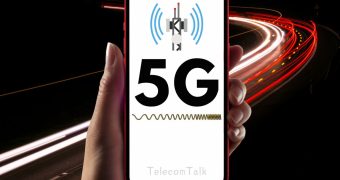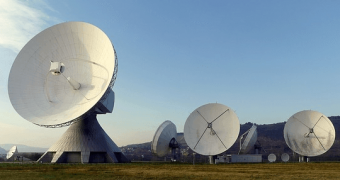
The Department of Telecommunications (DoT) is in the final stages of framing rules for the administrative allocation of satellite spectrum, with a draft expected to be released shortly for stakeholder feedback. The upcoming framework, being developed under the new Telecommunications Act, proposes to allocate satellite spectrum on a first-come, first-served (FCFS) basis, ETTelecom reported, citing senior government officials.
Also Read: TRAI Says Satcom Services Complement and Do Not Compete With Terrestrial Networks
FCFS Model Proposed for Satcom Spectrum
Officials indicated that since satellite spectrum is a shared resource, the FCFS model would not pose competitive concerns, unlike exclusive terrestrial spectrum allocations. However, interference management is expected to be a key operational consideration.
"The licensing and satellite divisions of the DoT are close to finalising the allocation rules. The draft will be soon put out and final rules are expected to be notified in a couple of months," an official was quoted as saying in the report.
While satellite spectrum was earlier allotted administratively to VSAT and other operators as part of licensing, the new rules will introduce a standalone authorisation regime with clearly defined modalities. Final rules are likely to be notified within the next couple of months.
"Since satellite spectrum is a shared resource, first-come, first-serve policy won’t be a problem as the same spectrum can be utilised by late entrants. But the key issue will be around interference and how best it can be minimised," said a second official, as mentioned in the report.
Also Read: ISpA Welcomes TRAI’s Satellite Spectrum Pricing Recommendations
TRAI Suggests 4 Percent AGR Pricing
The development follows the Telecom Regulatory Authority of India's (TRAI) recommendations on pricing, which propose a charge of 4 percent of adjusted gross revenue (AGR) for spectrum usage, with assignments valid for five years. Although the allocation rules do not require Cabinet approval, the proposed pricing mechanism will be vetted at the highest level.
DoT is reportedly targeting prompt completion of the entire process to ensure early commencement of services. It has already notified updated security conditions for satcom firms.
The finalisation of the spectrum framework comes amid increasing momentum in India's satcom sector. Companies such as Eutelsat OneWeb and the Jio-SES consortium, which already hold all necessary clearances and have complied with revised security norms, are awaiting spectrum to commence commercial operations. Starlink, owned by SpaceX, recently received a letter of intent for a satcom permit and will be allotted test spectrum to demonstrate security compliance.
Also Read: Starlink Secures LoI for GMPCS Licence, Nears India Entry
The move also marks a turning point in the long-standing policy debate between satellite operators and telecom companies. While telcos had demanded auctions citing the 2012 Supreme Court ruling on natural resources, TRAI dismissed these concerns, noting that satellite and terrestrial networks serve complementary roles and are not direct competitors.
India previously allocated terrestrial spectrum on a FCFS basis until 2010, a practice that was discontinued following the Supreme court’s 2012 ruling. The government, however, maintains that auctions are unsuitable for satellite spectrum due to its shared and non-exclusive nature.
Also Read: TRAI Proposes Administrative Allocation of Satcom Spectrum With Five-Year Licensing Framework
Space Sector Set for Boost
The policy shift is significant for India’s space ambitions, with the domestic space economy projected to reach USD 44 billion by 2033, up from a 2 percent to 8 percent global market share, according to space regulator IN-SPACe.
The Digital Communications Commission (DCC), DoT's top decision-making body, is expected to review TRAI's recommendations before the final pricing is sent to the Cabinet for approval, according to the report.
You can also join the TelecomTalk WhatsApp Community and TelecomTalk WhatsApp Channel for updates and discussions.















